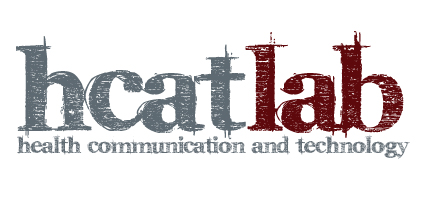
HCAT lab has spent the last decade quantifying media coverage of cancer, as most people learn about cancer research from the news. Unfortunately, this research has revealed that cancer news coverage has several systematic biases.
A recent article in the Los Angeles Times reported on the cancer risks associated with smoking cigars (The FDA’s Power over Cigars, 2012). The article noted that smoking cigars increased risk for lung cancer as well as cancers of the mouth, lips, throat, and esophagus. Perhaps for space reasons, the article did not mention the relationship between inhaling cigar smoke and increased risk of pancreatic and bladder cancer (McCormack et al., 2010; Shapiro, Jacobs, & Thun, 2000). In isolation, this omission is unremarkable; however, what if this situation occurs frequently and predictably? That is, would it be problematic if certain cancers were less likely to be discussed in news coverage (e.g., bladder cancer) whereas others were frequently the focus (e.g., lung cancer)?
Past content analytic research has found that certain types of cancer are more or less likely to receive news coverage. For example, Jensen, Moriarty, Hurley, and Stryker (2010) found that bladder cancer was less likely to appear in newspapers (11th most mentioned cancer in the news) than in the real world (6th in terms of real world incidence). Meaning five other types of cancer were more likely to appear in stories. Similar coverage patterns have emerged in other studies (Cohen et al., 2008; Slater, Long, Bettinghaus, & Reineke, 2008).
Our latest research extended this work by demonstrating that cancer incidence perceptions paralleled previously documented news distortions. Ina survey of 400 adults, overrepresented cancers were overestimated (e.g., blood, head/brain) and underrepresented cancers were underestimated (e.g., male reproductive, lymphatic, thyroid, and bladder). Self-reported news consumption was also related to perceptual distortions such that heavier consumers were more likely to demonstrate distorted perceptions of four cancers (bladder, blood, breast, and kidney).
Of interest, distortions in risk perception and news coverage mirrored discrepancies in federal funding for cancer research (see Figure above). Breast cancer is second in actual incidence, but it receives (at least) double the funding of any other cancer site. The abundance of funding for breast cancer research is consistent with both public perception and news coverage patterns. A similar pattern emerges for blood cancer which is the 5th most funded cancer – and 4th in perceived incidence and 5th in news coverage – despite being 10th in actual incidence. Conversely, bladder and kidney cancer receive comparatively less funding. Bladder cancer is among the least funded cancers (13th) – and lowest in perceived incidence (15th) and news coverage (11th) – despite the fact that it is one of the most common (6th in actual incidence). Kidney coverage is underrepresented in the news (12th in news incidence, 9th in actual incidence).
Healthcare professionals, journalists, and the public should be educated about these distortions to reduce or mitigate potential negative effects on health behavior and decision making.
Want to know more about this research? Click here to read our article published in the Journal of Health Communication.

